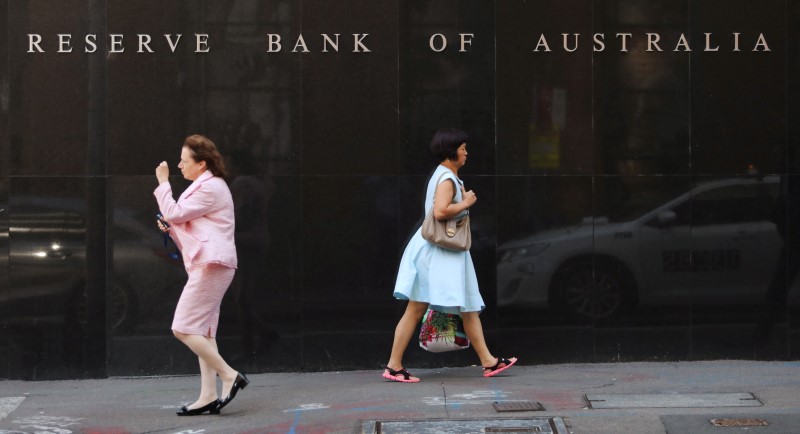(Bloomberg) -- The Reserve Bank of Australia could be drawn into quantitative easing if it wants to achieve its inflation mandate without venturing into negative rates, according to Goldman Sachs Group Inc (NYSE:GS).
Using the RBA’s new large-scale macroeconomic model, Goldman economists led by Andrew Boak said current market pricing of a cash rate around 0.5% would probably fall “well short” of achieving the RBA’s inflation mandate of 2%-3%. The cash rate would need to be negative 1% to reach inflation and employment goals over a two- to three-year time horizon, they said.
“Assuming the RBA refrains from implementing negative rates in practice, we estimate that an equivalent amount of stimulus could be delivered by lowering rates to their effective lower bound (GS: 0-0.25%) and implementing a QE program worth around A$200 billion,” the Goldman economists said in a report dated Oct. 1. The QE would amount to $134 billion in the U.S. currency.
The RBA cut its cash rate to a record-low 0.75% on Tuesday, with Governor Philip Lowe reaffirming his faith in monetary policy in a speech hours later, despite the easing mainly serving to refuel the housing market. The central bank recognized there were some undesirable effects from cutting rates, Lowe said, stating that “many people” had written to him complaining that low rates were hurting their finances.
Read: Australia Cuts Key Rate as Global Threats, Unemployment Rise
Goldman Sachs (NYSE:GS) discouraged a “literal interpretation” of the model’s results, saying they might not capture all dynamics including global risk sentiment and long-run issues around financial stability. But, the economists said the result underscores that the risks to Goldman’s base case, for the RBA to cut the cash rate to 0.5%, are skewed to the downside.
“We continue to see a material risk that the RBA will deliver even deeper rate cuts and be drawn into unconventional policies,” the economists wrote. “For now, however, this remains outside our central scenario given Governor Lowe’s concerns about financial stability risks from loose monetary policy.”
